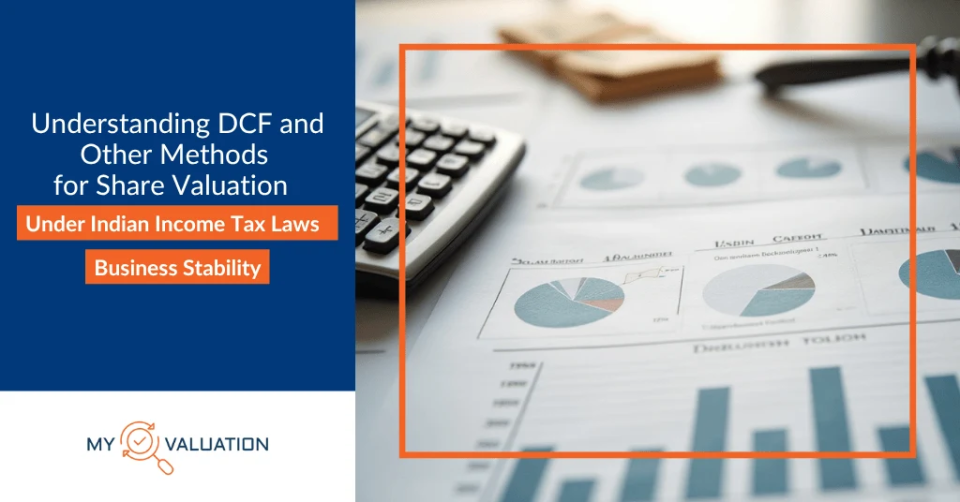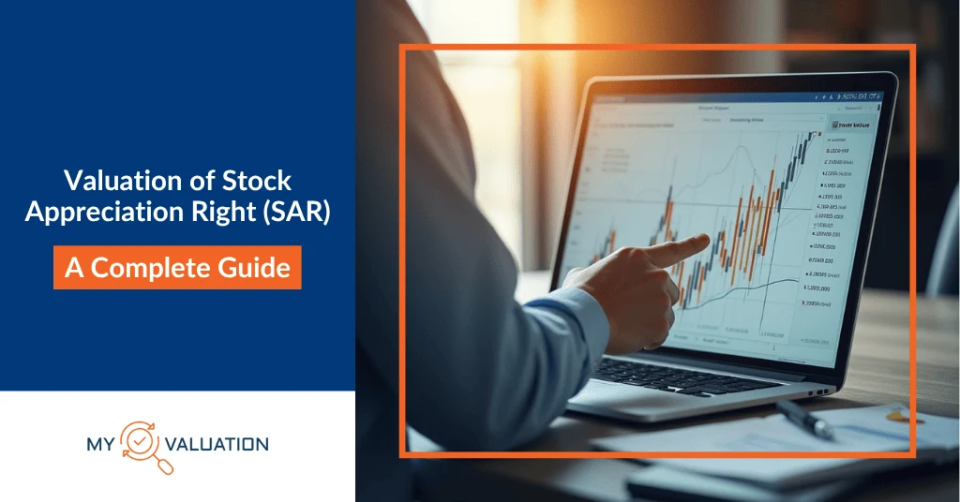How to Value a Company: An In-Depth Guide to The Business Valuation Process?
Introduction
Both a pearl of wisdom and art, valuing a business is notoriously hard. But knowing a company’s value is pivotal.
The business valuation process has a series of ways to follow in a certain order, colorful formulas for value computations, and accounting guidelines decreeing the rules to follow for specific situations. This process requires extensive experience and knowledge to execute rightly.
Business valuation?
Business valuation is the process of calculating the fiscal value of a company or an asset. The valuation involves collecting and assaying a range of criteria, similar as profit, gains, and losses, as well as the pitfalls and openings a business faces. The company’s estimated natural value enables entrepreneurs and investors to make informed purchase, trade, or investment opinions in the business.
Still, the process is important. It helps calculate the natural value of an asset, which occasionally can be detached from its current trading request price. Natural value strives to be objective and less affected by the short-term ups and area of frugality. The difference between natural and request values is frequently where gains are made and losses.
Data used to determine valuations
There are some key pieces for determining the business valuation:
Operation experience.
Hand experience and provocation are inversely important — smart, pious professionals increase the value of a company they work for.
Request conditions.
A booming frugality could increase demand for specific products and services. Still, a sector with numerous analogous businesses may drop the valuation of new entrants for the request.
Impalpable means.
Character trademarks and client relations can boost business valuations. Although it’s frequently hard to put a figure on these means, their impact is significant.
Palpable means.
Tools, business demesne, and vehicles also need to be taken into account, and their value can be fluently calculated. Depending on their volume and quality of assets , physical means can boost business valuations of the company .
Company size.
Larger companies generally command larger valuations than their lower counterparts because of lesser-income aqueducts. Big businesses also tend to have easier access to capital and well-developed products, and they’re less impacted by the loss of crucial leaders.
Competitive advantage.
However, the business valuation will take a megahit, If this advantage can’t be maintained over time. But companies that can maintain their competitive advantage for long ages of time can command advanced valuations.
Who uses business valuations?
Venture capital(VC) enterprises
value companies to be suitable to report to limited mates (LPs) on how their investments are performing. To know the value of companies in which VCs plan to invest is important, too for valuation. Valuation data helps investors during accommodations and can inform their decision to ask for liquidation preferences or increased board representation.Commercial M&A
need accurate valuations of companies they plan to invest in or acquire. Numerous of these accession targets are private businesses. Calculating their value is more delicate than valuing public companies, but it’s critical to ensure each side is satisfied with deal terms.Investment bankers
have to know the valuations of companies they deal with, whether they’re helping guests sell, buy, or invest. Knowing valuations helps bankers give effective advice. Valuation data is also important for pitching new guests.Entrepreneurs
use company valuation data considerably. When looking to sell a business, for illustration, entrepreneurs want to get a fair price for their shares without spooking implicit buyers. Valuations are vital for pitching to investors, too — a well-proven valuation shows an entrepreneur’s credibility.Workers
with stock options are interested in knowing whether the value of their options is adding or dwindling. Alternatively, if staff want to buy shares in the company they work for, valuation data can help set a realistic price.How to value a company?
Request value indicates how much a company is worth according to request actors and investors.
There are different ways to calculate the value of a private company or go beyond request capitalization when valuing public companies. These include
DCF Analysis Method
calculates moment’s value of anticipated unborn cash overflows using a blinked cash inflow analysis for the company valuation.Multiples Analysis Method
Estimate the value of a company using multiple similar companies.Net Book Value Method
Calculate the net book value of palpable and impalpable means.Scorecard Valuation Method
Value an incipiency using average valuations of startups operating within the same sector, stage, and region.Venture Capital Method
Calculates an unborn post-revenue valuation and also use that figure to arrive at a pre-revenue valuation.Berkus Method
Calculates the value of an incipiency by assigning a value of over to different parameters.Threat Factor Summation Method
Estimate the value of a pre-revenue incipiency by scoring 12 threat orders.Process for Post-revenue companies
Note, still, that figuring out private business valuations is particularly delicate, given limited literal data and unapproachable or unaudited fiscal information.
Valuing companies with revenue — meaning they have started to generate sales and have entered the “post-revenue” stage — is typically done using DCF, valuation multiples, or asset valuation methods.
1. DCF ANALYSIS System
DCF analysis of a company revolves around calculating the unborn cash overflows and blinking them back to the moment.
Assaying mature private companies is a straightforward process. They’ve steady fiscal data that the professionals can use to prognosticate cash overflows and compare them with other public businesses.
In this case, a reduction rate is calculated by looking into several different factors.
• Threat-free rate channels plutocrats into a threat-free investment, similar to us store room bonds, and provides investors with the interest rate known as the threat-free rate. Hence, parlous investments into private companies need to give a better return than low-threat druthers.
• liquidity decoration unlike equities traded on major stock exchanges, the private-company owner can’t be snappily bought or vended. The reduction rate is therefore advanced as investors are “wedged” with their investments for some time.
• Threat decoration only a small chance of startups surviving beyond a decade of operation. Among those that do, numerous won’t perform as well as investors hoped. The threat decoration is an attempt to capture these threat factors and reflect them in a reduction rate.
2. MULTIPLES ANALYSIS System
A multiple analysis involves reasoning the value of a company using a multiple — a rate calculated by dividing one fiscal standard by another — of similar private companies.
Say, for a case, that possessors of a gaming company with 10cr in profit want to price their business. Exploration shows that several challengers have lately been acquired for 5x profit. Entrepreneurs can also decide to price their company at 50cr.
An implicit result is to make a comparison with a broader group of all gaming companies. Still, comparing with approximately affiliated businesses makes valuation less accurate.
3. NET BOOK VALUE System
Calculating the net book value (nbv) is a valuation system favored by companies with lots of palpable and impalpable means. Palpable means include land, outfit, business demesne, and other physical means. Impalpable means encompass a range of non-physical means, similar as character, patents, and brand.
Process for Pre-revenue companies
Valuing pre-revenue startups is more difficult than valuing post-revenue startups because of the former lack of revenue and profit figures. Hence, pre-revenue valuation is done using a number of imperfect parameters, such as traction, the quality of founders, prototypes, and industry trends.
1. SCORECARD VALUATION System
The scorecard valuation method, constructed by angel investor Bill Payne, compares incipiency to other startups that are formerly funded and operate within the same sector, stage, and region. Several factors are considered, including platoon, product or technology, competitive terrain, deals and marketing, and any need for further backing.
The process starts with asking the average valuations of similar startups. Investors should take into account when these valuation numbers were released, because a recession or other request events may have had an impact.
In the coming step, investors should apply weights to colorful factors. Depending on their preferences, some investors may find operation brigades to be more important than the product.
2. Venture CAPITAL System
The VC method was developed in 1987 by Bill Sahlman, a professor at Harvard business school. It involves calculating post-revenue valuation and also using that figure to arrive at a pre-revenue valuation. The unborn value of an asset is calculated by multiplying projected profit with the projected periphery and the assiduity price-to-earnings (p/ e) rate or another applicable multiple.
3. BERKUS METHOD
The Berkus method was constructed by angel investor Dave Berkus. It assesses a company’s business idea, prototype, operation platoon, strategic connections, and deals plan.
Opting a business valuation system
There are numerous business valuation styles to choose. Some are more complex than others, and different styles may affect different valuations for the same beginning asset.
Opting for an applicable business valuation system depends on several factors, including the reason you need a valuation. However, for illustration, you generally want to achieve an advanced valuation, if you’re dealing with a company. But if you’re acquiring a business, you’re in favor of a more conservative appraisal to avoid overpaying in business.
It’s also important to consider whether a company is asset-heavy or service-oriented. However, the netbook value system might best capture its value, if a company is asset-heavy.
Investors also need to know assiduity morals. Businesses in certain sectors may be generally valued by a specific system or multiples that stylish prisoner their value.
Unique characteristics of technologies that companies offer need to be reckoned for. A business that pursues instigative but unproven tech might prefer a valuation system that captures unborn growth eventuality rather than current means.
Eventually, there’s no reason not to use multiple valuation styles for the same company and look at the normal of all styles.
Conclusion
Eventually, valuations aren’t endless. They rise and fall depending on a number of circumstances. Valuation is the most likely step for any startup or business before funding. With My Valuation get the best valuation for your startup & business.




